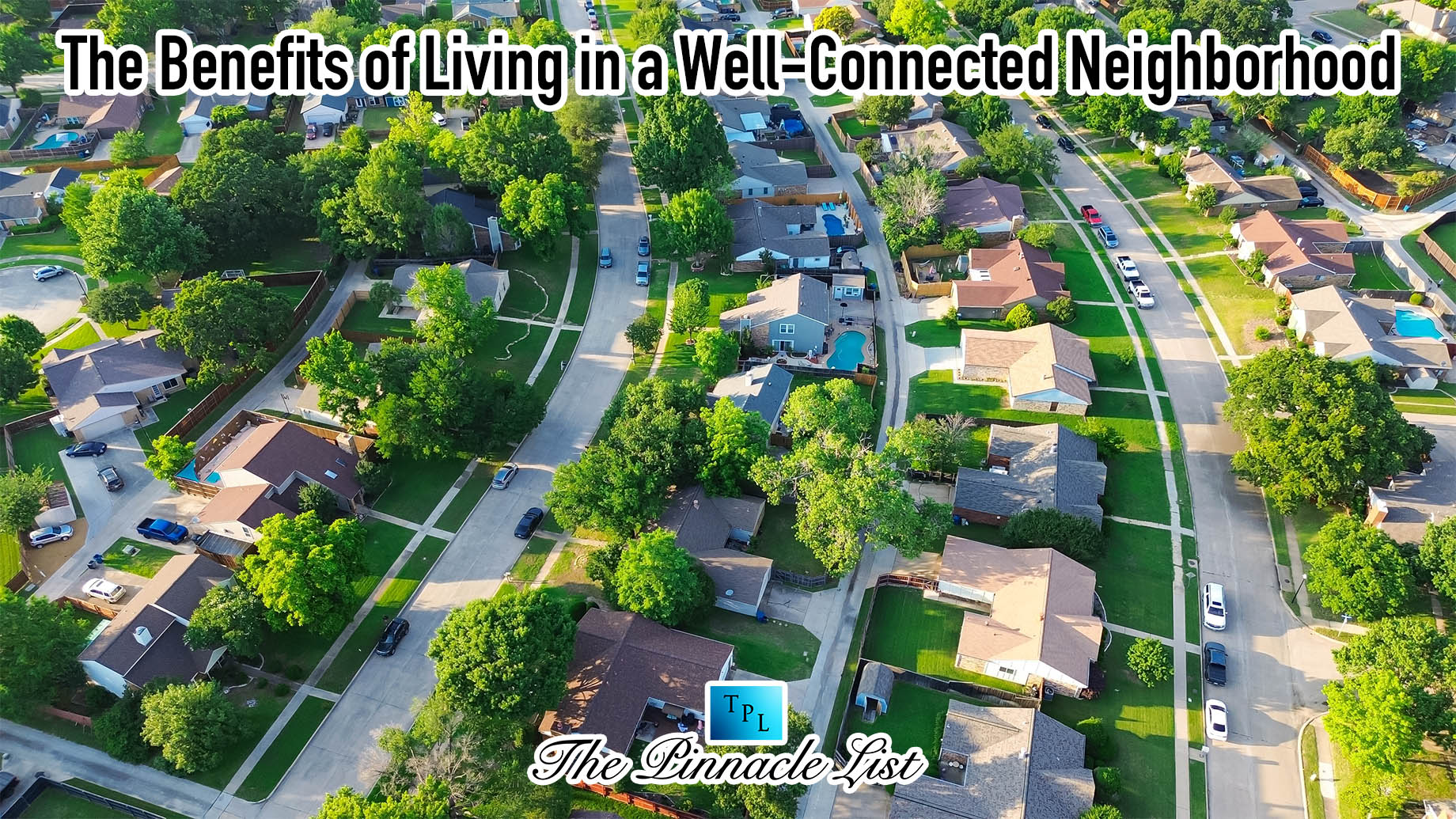
A well-connected neighborhood is a game changer for anyone seeking a balanced, convenient lifestyle. These areas prioritize connectivity, fostering a sense of community while providing seamless access to essential services and amenities.
From better social engagement to improved accessibility, the advantages of living in such neighborhoods are hard to overlook. Here’s why choosing a well-connected area can significantly enhance your quality of life.
Accessibility to Amenities and Services
One of the defining traits of a well-connected neighborhood is its proximity to essential services and amenities. Residents benefit from being near grocery stores, healthcare facilities, schools, and entertainment options, which saves time and reduces travel stress. This level of convenience makes it easier to manage daily responsibilities while enjoying the perks of leisure activities nearby.
Public transportation is another critical factor in these neighborhoods. A robust network of buses, trains, or subways provides easy commutes whether you’re heading to work, school, or a cultural event. For families, this means children can safely and efficiently reach schools or extracurricular activities without long, tiring commutes.
In addition to public services, well-connected neighborhoods often attract local businesses, including restaurants, fitness centers, and specialty shops. These businesses thrive in inaccessible locations, giving residents a variety of choices without requiring them to venture far. The convenience and variety improve the overall quality of life, enabling residents to spend more time engaging in fulfilling activities.
Holistic Living in a Thoughtfully Designed Community
Modern residential areas, such as a master-planned community, are meticulously designed to integrate connectivity into daily living. These communities typically feature strategically located homes, schools, parks, and recreational spaces that are easily accessible. This setup minimizes the need for long commutes, encouraging residents to interact with their surroundings.
Additionally, these communities emphasize pedestrian-friendly designs, such as wide sidewalks, bike paths, and green spaces. These features not only reduce dependence on vehicles but also promote an active lifestyle.
Residents often find that this layout encourages casual interactions, strengthening bonds with neighbors and fostering a spirit of camaraderie. This design ensures that everything you need—from schools and shops to recreational hubs—is never far from home, making day-to-day life less stressful.
Environmental and Economic Advantages
Living in a well-connected neighborhood is often better for the environment. Reduced reliance on cars leads to lower greenhouse gas emissions, making such areas a more sustainable choice. Walkable neighborhoods encourage residents to take shorter trips on foot or by bike, significantly reducing their carbon footprint. Over time, these environmentally conscious choices contribute to cleaner air and a healthier community.
Economically, these neighborhoods also offer long-term benefits. Homes in well-connected areas tend to maintain or increase their value over time as demand for accessible and community-focused living continues to rise. Whether you’re buying or renting, choosing a home in a well-connected area is an investment in future stability.
Moreover, reduced transportation costs contribute to overall savings. With less reliance on fuel or ride-sharing services, families can allocate more of their budget to other priorities, such as education, hobbies, or savings. This financial relief can be particularly valuable in today’s economy, where efficient resource management is key.
Strengthened Community Relationships
A well-connected neighborhood fosters a sense of togetherness among its residents. Shared spaces, community events, and accessible recreational areas encourage regular interaction, making it easier to build meaningful relationships. These interactions often lead to a strong support network, which can be invaluable for families, professionals, and retirees alike.
Parents in these neighborhoods often find it easier to coordinate playdates or school pick-ups with nearby families, creating a close-knit environment for children to grow up in. Similarly, seniors benefit from having a support system nearby, whether through neighbors checking in or opportunities to participate in community activities.
This sense of community extends beyond personal relationships. Many well-connected neighborhoods establish local organizations or committees to address issues and improve the area further. These collective efforts often result in cleaner, safer streets and more vibrant public spaces, benefiting everyone in the community.
A Balanced and Fulfilling Lifestyle
Perhaps the greatest benefit of living in a well-connected neighborhood is the ability to achieve balance. With access to essential services, recreational activities, and social opportunities all within arm’s reach, residents can focus on what truly matters—whether that’s spending time with loved ones, pursuing hobbies, or simply enjoying the comforts of home.
These neighborhoods also encourage a healthier lifestyle. With green spaces and pedestrian-friendly infrastructure, residents are more likely to engage in physical activities such as jogging, cycling, or walking. The reduced need for long commutes frees up valuable time that can be spent on self-care, family bonding, or personal growth.
All in all, living in a well-connected neighborhood brings an array of benefits, from greater convenience and sustainability to stronger community ties and improved lifestyle balance. Whether you’re looking for reduced commuting times, access to amenities, or a chance to engage with your neighbors, these neighborhoods deliver on every front.
For those considering the move, choosing a location that prioritizes connectivity and thoughtful design is a decision that pays dividends in quality of life and long-term value.